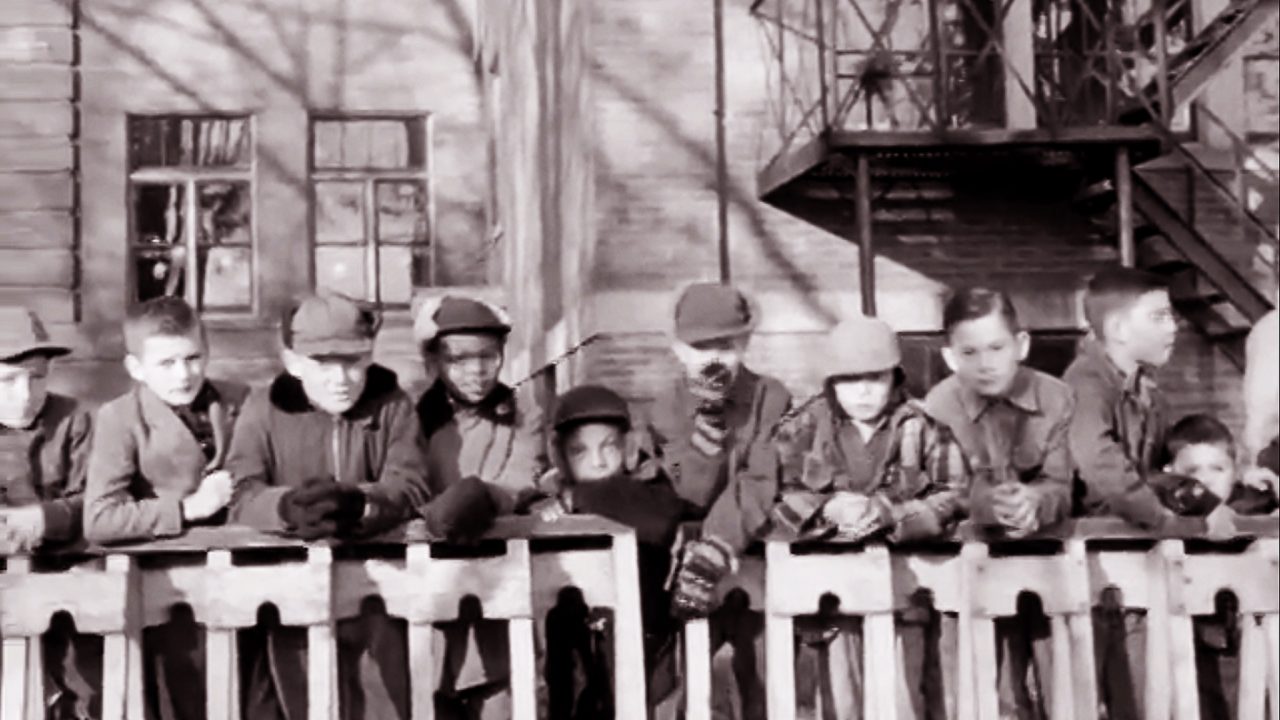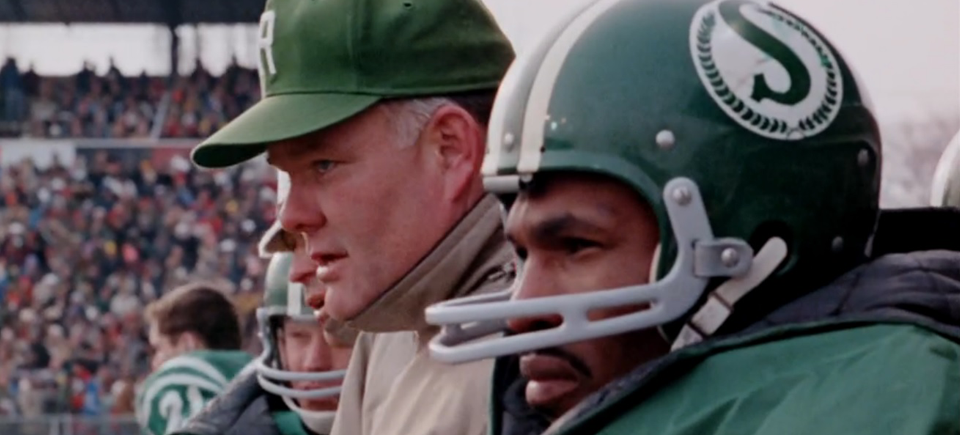On the Spot: The NFB in the early days of television
Television arrived in Canada on September 6, 1952, when CBFT went on the air in Montreal, broadcasting in both English and French. A second station of the Canadian Broadcasting Corporation (CBC) followed two days later in Toronto. The NFB was involved in those early days of Canadian TV, producing content specifically for this new medium and recycling older films for broadcast.
A little history
Television was developed in the early part of the 20th century, but it was seen as an experimental medium that would never be able to compete with radio. In Great Britain, the BBC (British Broadcasting Corporation) broadcast as early as 1930, but via a very low-definition system (only 30 lines!). The outbreak of World War II saw the suspension of television in that country. In the USA, the experimenting continued before commercial television was authorized by the Federal Communications Commission (FCC) in 1941. North American broadcast standards were also set, with the norm being 525 lines of definition. Unfortunately the FCC terminated all television broadcasting, due to the war, a year later.
The end of the war brought television back in the USA, and commercial television as we know it today began in 1947 when NBC and the Dumont network started regular programming a few hours every day. The following year there were four networks in the USA and all-day programming commenced. The number of television sets in American homes went from 10 thousand in 1946 to 12 million just 5 years later!
In Canada, people who were lucky enough (or rich enough) to own a television and were close enough to the American border were treated to a veritable smorgasbord of programming. The CBC was eager to enter the fray and offer Canadian shows to Canadians to complement what it had been doing on radio since the early 1930s.
The NFB was associated more with films than television, and the CBC was not particularly interested in working with its cousins. After some rather acrimonious discussions, an agreement between the two Federal agencies was eventually reached to have the NFB produce documentary content for the broadcaster.
The NFB sells to television
The NFB had already sold films to television stations in the United States, Great Britain and Cuba in the late 1940s and early 1950s, but these were not made specifically for this medium. They were instead, theatrical and non-theatrical shorts that were re-purposed for television. The NFB did the exact same thing for the CBC, producing the Window on Canada series (airing from October 18, 1953) using older edited NFB films with a presenter in the studio, who would appear at the start to introduce the films. In later episodes he would have guests discuss the films with him. The series ran for 78 episodes before bowing out. This series was a relatively inexpensive way to produce content for television, but the films remained older titles from the NFB’s collection.
The first series made for television
It was decided that the first series made specifically for television at the NFB would be a series of documentary reports running 15 minutes on different aspects of life in Canada. This was On the Spot. The reports were produced with a crew of only three people – a director, cameraman and on-screen host. They used a portable 16mm Auricon camera that recorded the sound directly onto the film (eliminating the need for a separate audio recording device). The reports would be shipped back to Ottawa for editing and eventually sent to the CBC TV stations across the country for broadcast. The weekly series went on the air on October 6, 1953, at 7:45 pm and ran until June 30 for a total of 39 episodes. Fred Davis (who would later host the seminal CBC series Front Page Challenge) hosted most of these episodes. At one point in the first season, the three-man crew left Ottawa and travelled west filming stories throughout the country, before flying off to Japan and Korea to film more reports – a gruelling four months of travel. Sometimes, situations beyond the crew’s control would dictate just what was filmed and what wasn’t. The crew were planning on filming a report in the Rocky Mountains but bad weather cancelled this as they just couldn’t get enough material to put together something worth broadcasting.
The series was very primitive, and 15 minutes was just not enough time to present a story, no matter how interesting, although Fred Davis and the crew tried very hard. At the NFB, the producers were somewhat disappointed with the quality of the product and petitioned the CBC to increase the time slot to 30 minutes. This was accepted, and the following season saw 26 episodes produced that were a definite improvement over those of the first season. Several hosts worked on the second season, but Davis had the lion’s share as on-screen host.
Survival in the Bush , Bernard Devlin, provided by the National Film Board of Canada
One terrific episode Survival in the Bush has producer Robert Anderson acting as host being dropped off in the Quebec north trying to survive with the help of an Indigenous guide armed with just an axe. Although the report is obviously staged(notice how the camera still moves when the cameraman is off gathering firewood), there are some great tips on how to start a fire without matches, find food and build a birch bark canoe.
Dresden Story, Julian Biggs, provided by the National Film Board of Canada
Another solid episode The Dresden Story involves racism in a small Ontario town. The NFB film crew attempt to facilitate discussion between the town’s white and black populations in an effort to diffuse a potentially explosive situation. Unfortunately, it was not possible to get all the people together for the discussion, so they were filmed separately (at their request). The episode does a great job getting the facts out and avoiding sensationalism.
Artist in Montreal, Jean Palardy, provided by the National Film Board of Canada
Artist in Montreal presents the Automatistes, a group of artists from Montreal who create abstract art in their studios and on the street. It’s a fascinating look at these artists who set up the Place des arts, a co-operative studio to pursue sculpting, painting and photography.
The series changed time slots frequently playing as late as 11:45 pm on Monday nights before going to Sundays at 4:30 pm. The second season aired on Sunday nights at 10 pm. The NFB eventually asked a research firm to do an audience survey in Montreal and Toronto in 1955 to see what people thought of the show. It found that three quarters of the audience thought the series good and 47% watched it regularly.
Several reports were not broadcast because the material was not felt to be strong enough, but one was cancelled due to political interference. The crew had shot a report on how Parliament works and staged a mock session with actual members of Parliament. When the report was screened to members of the Prime Minister’s Office, they complained that showing a session of Parliament without including the PM was a little ridiculous. The NFB had no choice but to scrap the episode.
After the 26 episodes of the second season aired, the series was cancelled. It was replaced on the CBC schedule by Perspective, a 30-minute show that mixed documentary reports and dramatizations on contemporary issues in Canada.
French television production
On the French side, the NFB produced a parallel series, Sur le vif, which had the same setup of a three-man crew, including the on-screen host. Twenty-six 15-minute episodes aired on Radio-Canada from October 1954. As with Window on Canada, the NFB produced Regards sur le Canada, which also recycled older NFB films and featured an onscreen host who presented them from the comfort of his studio set.
Today On the Spot and Window on Canada seem very primitive, but they fulfilled their mandate to show Canada to Canadians. There is a certain naïve charm to these shows that makes even the most trivial episode fun to watch. These days, pretty much everything the NFB produces ends up on television in Canada and all around the world. It all started with On the Spot, and to a lesser extent Window on Canada, shows that used the new medium to reach the greatest number of Canadians possible and tell Canadian stories.
(The following On the Spot episodes are also available to view on NFB.ca : Camera Men, Football Story, How to Climb a Mountain, Judo Jinks, Korea After the War, Radar Station, Routine Flight, Test Pilot, Transpacific Flight, Two Countries One Street and The Zoo in Stanley Park )




I would love to see the film, “On The Spot Lunenburg”. I believe Fred Davis was the narrator.
The film “Survival in the Bush” has a very cavalier attitude to killing the bear mother, leaving the bear cub to die. Quite upsetting to see such callousness.